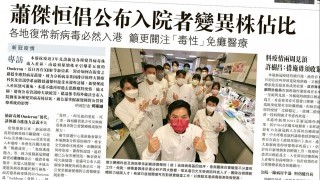World’s first atlas of airborne microbes sheds light on public health research
Other Articles
A cubic metre of “empty” air contains 10,000 bacteria or more, and interest in the role of air as a habitat – not merely a conduit – for microbes has grown enormously since the start of the COVID-19 pandemic. But the microbial population of the air that surrounds us is comparatively unknown.
However, a research expedition led by PolyU scientists is about to change that.
After nearly a decade of effort, the research team has compiled a comprehensive map of the world’s airborne microbes, providing fresh insights into how these species interact with the surface environment.
The team, led by Prof. Xiang-dong Li, Chair Professor of Environmental Science and Technology and Dean of Faculty of Construction and Environment, worked in collaboration with researchers on the mainland and in the US to sample airborne microbes across the world – ranging from those found at ground level to those on rooftops and high mountains, as well as those from densely populated urban centres to those in the Arctic Circle.
Overall, the researchers estimate that half of airborne bacteria originate from ground sources. Urban air has especially high rates of human-associated bacteria – some harmless, others pathogenic.
“We have verified that human activities have certainly changed the structure of microbiomes in the natural ambient air, particularly with a higher abundance of pathogenic bacteria in urban air,” said Prof. Li.
Macroscopic life, notably animals and plants, is most diverse in equatorial regions (for example, in warm and wet rainforests) and its diversity decreases closer to the poles. For microbes, the picture is more interesting – moving from the equator, diversity maximises at mid-latitudes before falling away again.
Such a pattern was already well-established for terrestrial and aquatic microorganisms, but the new atlas confirms that it also applies to the airborne microbiome. The authors surmise that the “bump” in diversity at mid-latitudes is caused by stronger sources of microbial input to those regions.
“Having experienced the pandemic for three years, people now pay more attention to this invisible but influential microbial community. The research outcomes could serve as a critical reference for predicting planetary microbiome responses and the health impacts of inhalable microbiomes with future environmental changes,” Prof. Li added.






